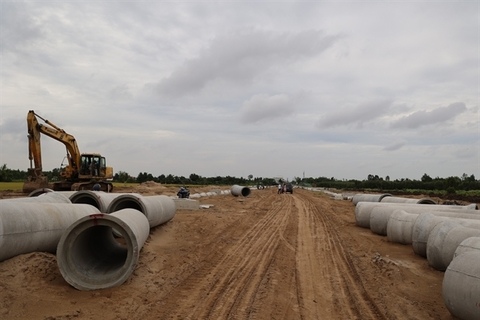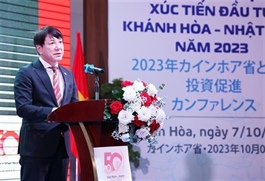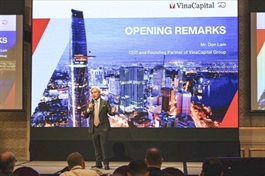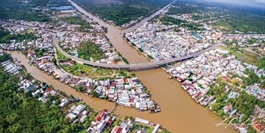VN takes drastic measures to speed up public investment disbursement
VN takes drastic measures to speed up public investment disbursement
Việt Nam is taking drastic measures to accelerate the disbursement of public investment in the remaining months, striving to fulfil the disbursement goal to create a driver for economic growth.

A public-invested road project in Long An Province. Việt Nam is taking drastic measures to accelerate the disbursement of public investment in the remaining months. — VNA/VNS Photo Minh Hưng |
The Ministry of Finance’s statistics showed that more than VNĐ363 trillion (US$14.89 billion) was disbursed in January – September, or 51.38 per cent of the plan, higher than the disbursement rate registered in the same period last year at 46.7 per cent. In terms of value, the disbursed sum was more than VNĐ110 trillion higher.
The Vietnamese Government always considered public investment disbursement to be among key solutions to achieve the economic growth target in the short term and to develop a modern and synchronous infrastructure system to improve the competitiveness of the economy and attract investments in sustainable development.
However, the disbursement rates remained disappointing in many ministries, agencies and localities with more than 30 reporting rates of below 30 per cent, leaving a huge workload in the last quarter to achieve the target of disbursing at least 95 per cent out of VNĐ711 trillion public investment.
In that context, localities were taking drastic measures to achieve the goals.
Cao Tường Huy, acting chairman of the People’s Committee of Quảng Ninh Province which reported the disbursement rate of 42.3 per cent as of the end of the third quarter, said that the northern province asked contractors to increase working time. Incompetent contractors would be replaced, he said.
The fourth quarter was expected to see better disbursement than the first three quarters, he said.
Phan Văn Mãi, chairman of HCM City People’s Committee, said that the southern city faced with difficulties in land clearance, which caused slowness in the disbursement of public investment.
Statistics of the finance ministry showed that nearly 300 projects in 57 provinces and cities reported disbursement rates of below 10 per cent. Especially, more than 100 projects had not managed to make any disbursement.
Localities with highest disbursement rates included Long An (68 per cent), Tiền Giang (61 per cent) and Đồng Tháp (55 per cent).
Meanwhile, Trà Vinh, Vĩnh Long, Sóc Trăng, An Giang and HCM City experienced the lowest disbursement rate. Particularly, the figure in HCM City was only 30 per cent due to bottlenecks in site clearance process.
The Ministry of Finance proposed the allocated public investment for these projects be cut if they failed to make disbursements before October 30.
Nguyễn Quốc Việt, deputy director of Việt Nam Institute for Economics and Policy Research, said that the lack of accountability and dare-to-do spirit was a major cause for slowness in public investment disbursement.
Other causes included bottlenecks in bidding procedures, investment procedures, handling of public assets and land auctioning, together with slow site clearance, and shortage of raw materials, Việt said.
Deputy Minister of Planning and Investment Trần Quốc Phương said that the key point to create a breakthrough for disbursement was to strengthen discipline in public investment.
Accordingly, ministries, agencies and localities needed to be proactive and timely in raising solutions to remove bottlenecks of each project, enhancing the responsibility of the heads in the disbursement rates as well as investment efficiency.
Nguyễn Thị Hương, general director of the General Statistics Office, said it was critical to improve the legal system regulating public-invested projects, from the preparation stage to hand-over, together with increasing the quality of preparations for the projects to ensure smooth implementation.
She stressed that the disbursement must go along with ensuring quality and efficiency of the public investment projects. The capital allocated for stagnant projects should be transferred to projects with good disbursements.
Strict punishments should be raised to handle violations or irresponsibility which caused slowness in public investment disbursement, Hương said.
A close watch must be placed on the supply, quality and prices of construction materials, she urged.
In addition, administrative reforms and application of information technology should be promoted to speed up the handling of public investment procedures.
Former Director of the General Statistics Office Nguyễn Bích Lâm said that if Việt Nam achieved the public investment disbursement rate of 95 per cent this year, the country’s economic growth would be 1.3 percentage points higher.























